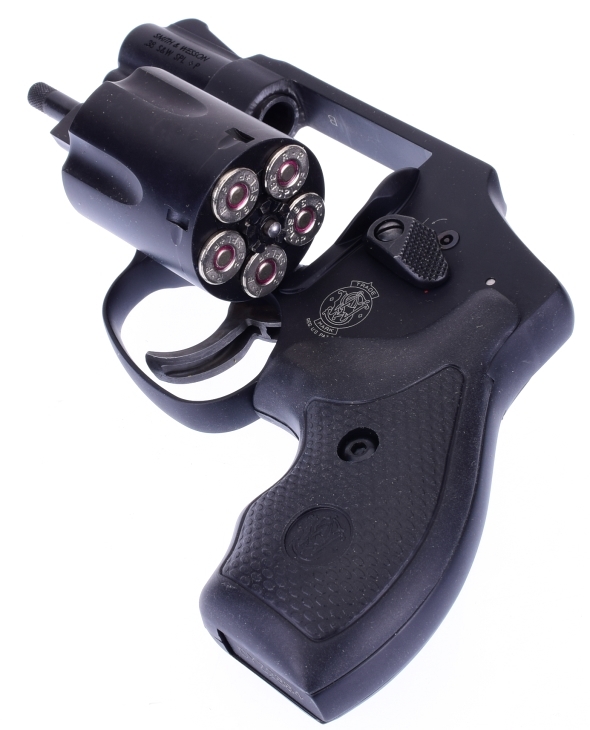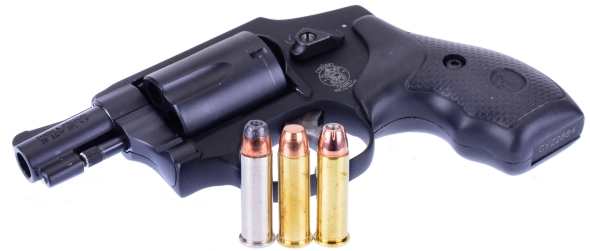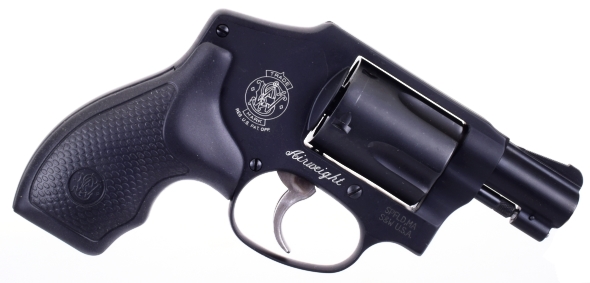
The S&W 442-2 is barrel marked for 38 Special +P ammunition so both standard pressure and +P loads were fired. Standard pressure, or Pmax pressure for the 38 Special is 17,000 psi, +P pressure is 18,500 psi. For the sake of context, the 357 Magnum Pmax is 35,000 psi. The numbers are neither cause for celebration or condemnation in the absence of objectives.
Why, or why, oh why-o?
Small frame, short barrel revolvers, often referred to as snub nose revolvers, are highly concealable and light to carry and shoot. They are also very easy to operate; point and shoot. None of this comes without a compromise. The shoot barrel gives up a good deal of exterior ballistic performance, both recoil and muzzle blast are significantly increased over a longer barrel medium size frame firearm, the very short sight radius and typically non-adjustable sights make precise shooting a challenge, and the small frame often results in a less than secure two finger grip.
Small frame revolvers are a good choice where concealment and/or exceptionally light weight are the major objectives; carrying concealed in the summer when light and less clothing is worn, or as a backup in a more obscure carry location. A hunter may want to carry one as a finishing firearm for self defense where it would be out of the way of a primary firearm, or perhaps a hiker, jogger or fisherman. Why would a jogger need to carry a firearm? Because in some states joggers, hikers and mountain bikers have become cougar and bear snack food.
Small frame revolvers may not be a good choice for a home defense firearm, wilderness carry where the threatening animals are large and dangerous, as a primary hunting firearm, and where concealed carry is not so restrictive. Contrary to the often heard drum beat, small frame firearms, depending on caliber, may very well be a poor choice from shooters of small stature where recoil is an issue. There are many lightweight revolvers I would prefer not to shoot over even medium frame magnums of significantly larger cartridge size. In some case the little lightweights are hard to hold onto and the recoil velocity is high enough to pull bullets from chamber3ed rounds.
The 38 Special +P
Pictured below, three types of 38 Special ammo that represent two mind sets and practice ammo. There are, at the time of this writing, 102 commercial loads for the 38 Special, placing it third in array behind the 9mm Luger (146) and the 45 Auto (115) and ahead of the 357 Magnum (92). This could mean that 38 Special owners use their firearms for many application in concert with many types of handguns and long guns, or that 38 Special owners just have a difficult time making up their minds when it comes to ammo selection.

The FBI has a test protocol for testing bullet penetration, expansion and weight retention using Gel blocks and various materials ahead and behind the target. It is in recognition that living targets do not face squarely, they are of different sizes and are often shielded by clothing and other forms of cover. We follow the FBI bare Gel test criteria, we do not conduct tests 2 through 6 or the FBI Close Quarter Battle test procedure routinely as they are easy to understand but more specialized in execution and limited for our demographic in application.
| 38 Special | Grains | *Mfg. Test Barrel Length” |
Rated Velocity FPS |
1.875″ Actual FPS |
3 Shot 25 Ft Group “ |
Gel Block ” Penetration |
Recovered Diameter “ |
| Remington HTP +P ** | 110 | 4 V | 995 | 877 | 2.5 | 12 | 0.462 |
| Winchester Target | 130 | 4V | 800 | 748 | 1.8 | 18 | None |
| Hornady Custom XTP | 158 | 4 V | 800 | 728 | 2.1 | 14 | None |
| * V= Vented barrel to simulate a revolver’s cylinder gap | |||||||
Too often people will select or describe a firearm by its cartridge, without regard for barrel length or type, ignoring the major influence those details have on a cartridge. As can be seen above, those factors can mean a great deal. In this case the 38 Special barely meets the FBI criteria it suggests that in this form firearm it is intended for up close in personal. Perhaps the 7 yard range often used to define a typical live fire engagement that results in a fatality. It is not a firearm for a 25 yard engagement for the average person.
Conclusions
Handgun selection is all very personal; the facts are determined, a subjective preference spin is applied and the results are highly varied. Most of my carrying is open and ends up being a 4″ 357 Mag or a 4.25″ 45 Auto. That takes care of shop and being out in the woods. For concealed carry, it is almost always a baby 9mm or 380 Auto, mostly because they are flat and easy to park in a holster without a lot of effort and they all have at lease drift adjustable no snag sights.
This particular S&W was disappointing. Not so much in function, but rather is lack of quality of assembly… or maybe assembly handling. Scraped off anodized finish with expose bare metal, under rotated front sight, blotchy finish. A full, smooth pull of the trigger yields the best feel and function. S&W specifically warns against staging a double action trigger which is not a bad thing as staging yields a hard trigger break and heavier pull. The price of $469 MSRP seems lower than typical for S&W, but perhaps it is appropriate when looking at the overall product. We’ve had some very good experiences with S&W revolvers, so I think we will take a look at a few more.

Smith & Wesson’s Centennial Airweight Part I
Smith & Wesson’s Centennial Airweight Part 2

Email Notification